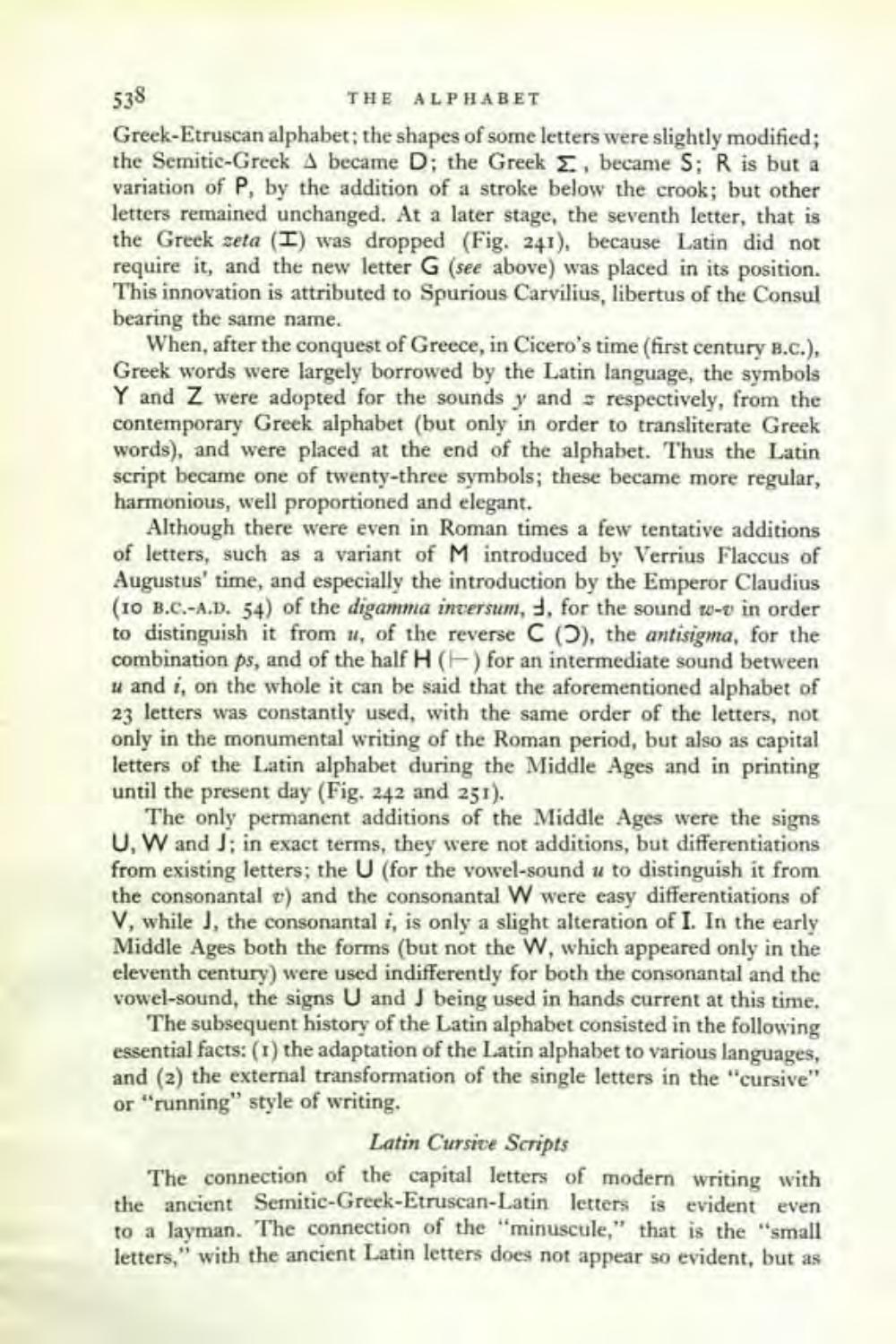________________
538
THE ALPHABET
Greek-Etruscan alphabet; the shapes of some letters were slightly modified; the Semitic-Greek A became D; the Greek E, became S; R is but a variation of P, by the addition of a stroke below the crook; but other letters remained unchanged. At a later stage, the seventh letter, that is the Greek seta (I) was dropped (Fig. 241), because Latin did not require it, and the new letter G (see above) was placed in its position. This innovation is attributed to Spurious Carvilius, libertus of the Consul bearing the same name.
When, after the conquest of Greece, in Cicero's time (first century B.C.), Greek words were largely borrowed by the Latin language, the symbols Y and Z were adopted for the sounds y and respectively, from the contemporary Greek alphabet (but only in order to transliterate Greek words), and were placed at the end of the alphabet. Thus the Latin script became one of twenty-three symbols; these became more regular, harmonious, well proportioned and elegant.
Although there were even in Roman times a few tentative additions of letters, such as a variant of M introduced by Verrius Flaccus of Augustus' time, and especially the introduction by the Emperor Claudius (10 B.C.-A.D. 54) of the digamma inversum, d, for the sound w-v in order to distinguish it from u, of the reverse C (O), the antisigma, for the combination ps, and of the half H (-) for an intermediate sound between u and i, on the whole it can be said that the aforementioned alphabet of 23 letters was constantly used, with the same order of the letters, not only in the monumental writing of the Roman period, but also as capital letters of the Latin alphabet during the Middle Ages and in printing until the present day (Fig. 242 and 251).
The only permanent additions of the Middle Ages were the signs U, W and J; in exact terms, they were not additions, but differentiations from existing letters; the U (for the vowel-sound u to distinguish it from the consonantal e) and the consonantal W were easy differentiations of V, while J, the consonantal i, is only a slight alteration of I. In the early Middle Ages both the forms (but not the W, which appeared only in the eleventh century) were used indifferently for both the consonantal and the vowel-sound, the signs U and J being used in hands current at this time.
The subsequent history of the Latin alphabet consisted in the following essential facts: (1) the adaptation of the Latin alphabet to various languages, and (2) the external transformation of the single letters in the "cursive" or "running" style of writing.
Latin Cursive Scripts
The connection of the capital letters of modern writing with the ancient Semitic-Greek-Etruscan-Latin letters is evident even to a layman. The connection of the "minuscule," that is the "small letters," with the ancient Latin letters does not appear so evident, but as




